The Beatles Cartoon: How the Fab Four Ruled Saturday Mornings | Woman's World
Do you remember The Beatles cartoon? No, not the one in which John, Paul, George and Ringo travel with an old man in a yellow submarine, meet some blue guys and save the world at the end with their music. This one was born out of Beatlemania, and brought an animated version of the Fab Four to Saturday morning television at a time when actual people were not the subject of cartoons.
“It began — as so much did back then — on February 9, 1964,” explains Mitchell Axelrod, author of Beatletoons: The Story Behind the Cartoon Beatles, “with The Beatles making their American debut on The Ed Sullivan Show. When impresario Sullivan introduced them with the words, ‘Ladies and gentlemen, The Beatles...,’ nothing would ever be the same again. Certainly not the people who watched that broadcast, one of whom was struck with an idea, which led to an innovative plan involving the British band, a lot of chutzpa and Saturday morning cartoons.”
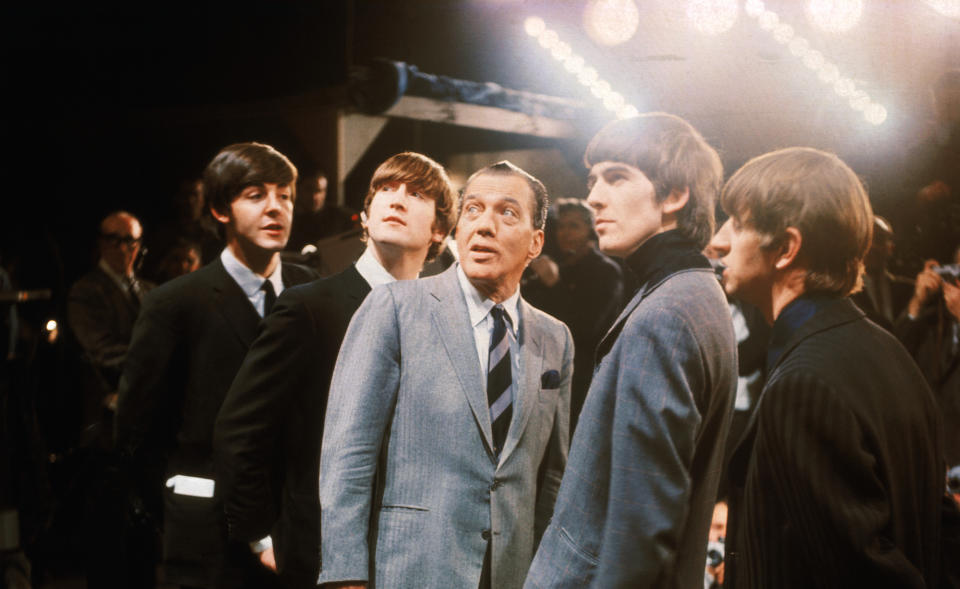
Getty Images
A gentleman by the name of Al Brodax had, at the time, established himself as a producer of cartoons based on King Features syndicated comic strips, among them Beetle Bailey, Krazy Kat and Snuffy Smith. Additionally, Brodax and his team had produced — in just 18 months —220 new cartoons featuring Popeye the Sailor.
What he had not suspected was that producing so much in so short a span of time would actually enhance his career beyond anything he could have imagined. And while the details surrounding how he got involved with the Fab Four — which in turn would lead to the production of The Beatles cartoon — have gotten a bit cloudy over the years, there’s no denying the fact that Brodax was the creative genius behind the venture.
RELATED: Saturday Morning Cartoons: Remembering Those Fun and Bizarre Shows From Our Youth
Notes Axelrod, “Al Brodax claimed that when he saw the group perform that Sunday night on the Sullivan show, he quickly called their manager, Brian Epstein, at his hotel in New York City. Unsurprisingly, everyone was chasing after Brian to inquire about The Beatles, so one can only imagine how tied up that phone line must have been following their incredible performance that Sunday night. It would seem to be virtually impossible to get through, but somehow Al Brodax did. Brian’s secretary Wendy answered the phone.”
The conversation, he says, went something like this:
WENDY: “Hello, Brian Epstein’s room.”
AL BRODAX: “Hi, my name is Al Brodax and I think I can help The Beatles. Can you hold on a moment; I have another call?”
“With that,” laughs Axelrod, “he put his associate, Mary Ellen Stewart, on the phone with Wendy. He was lucky enough to actually get through to Brian’s hotel room and he put them on hold! That is the word chutzpa personified. Luckily enough, the ladies chatted for a while and became phone buddies. And that is how Al Brodax said he got his foot in the door to the world of The Fab Four.”
The Fab plan unfolds
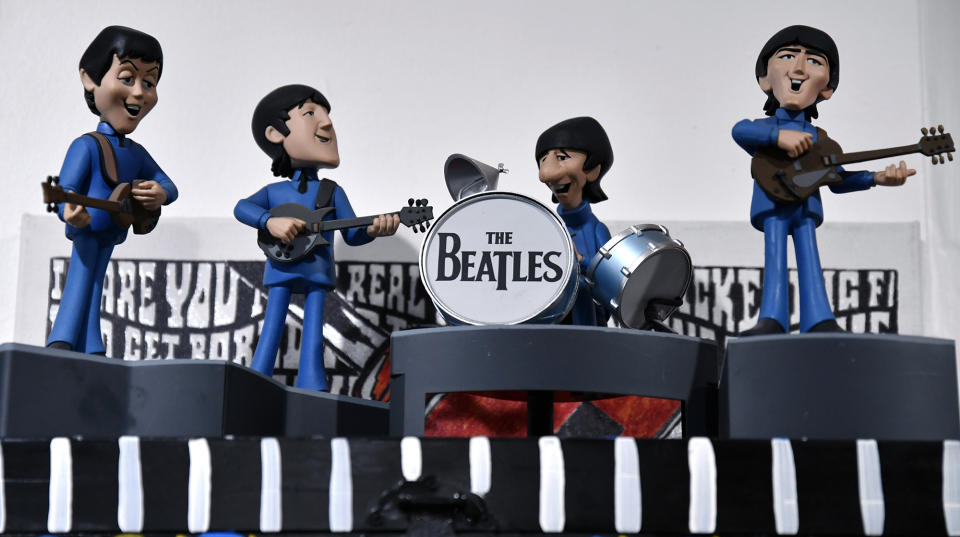
Michael Tullberg/Getty Images
The producer’s concept was to use The Beatles in animated form on television each week. Speaking to the group’s lawyer, Brodax secured the rights to do the Beatles cartoon. “According to Brodax,” the author shares, “The Beatles’ management company was not too strict about approvals of anything at that time. Having secured the rights, it was time to announce to the world that The Beatles, currently the hottest thing in the entertainment industry, would be the subject of a half hour cartoon series. No one knew exactly how long Beatlemania would last, but Brodax did know that he didn't have time to waste.”
RELATED: The 10 Most Revealing Beatles’ Songs, Reverse Ranked — Including Their Latest Track ‘Now and Then’
The first announcement of the Beatles cartoon in development came in the pages of Daily Variety in November 1964, calling for the show to begin airing in the fall of 1965. The challenge for Team Brodax, of course, was to get the characters designed, find scriptwriters, audition for voices, seek out a studio to create the magic, and find sponsors for the show — all in less than a year! But Brodax managed to accomplish it all, sponsors coming in the form of A.C. Gilbert (maker of Erector Sets and American Flyer trains), Quaker Oats and Mars Candy Company, with the network turning out to be ABC. At this point it was April of 1965, less than six months before the show was scheduled to debut.
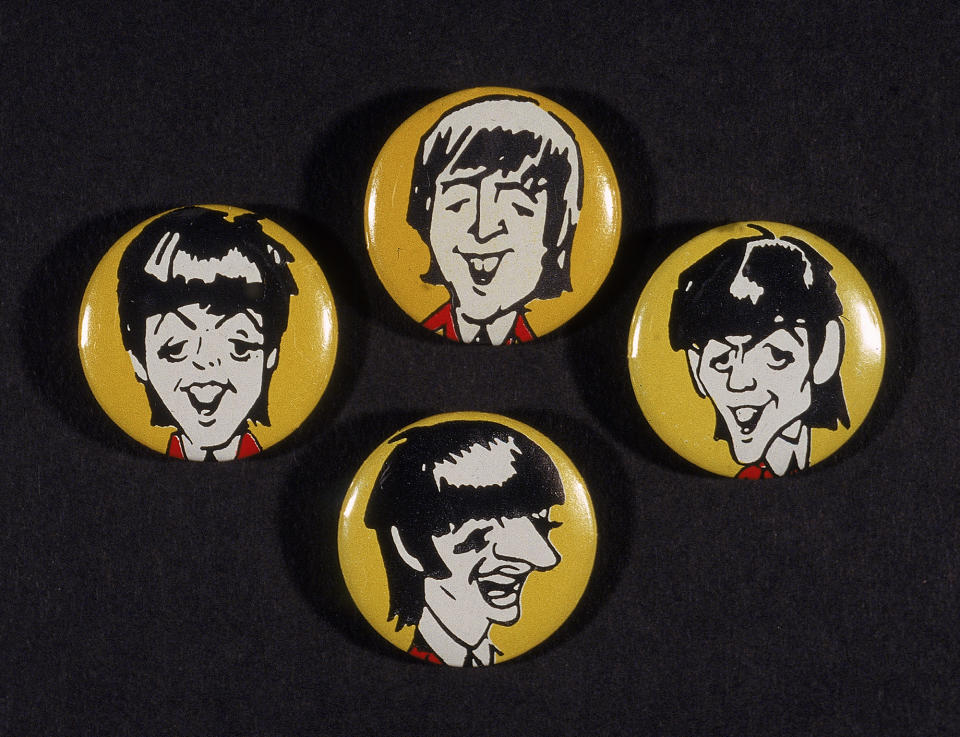
Blank Archives/Getty Images
Writers were hired and provided the format of the show: two five-and-a-half minute Beatles adventures based on one of their songs with two sing-along segments. Brodax recalled to Axelrod, “We did a lot of theme things about subjects such as ghosts, cowboys, ships at sea, Transylvania and things of that nature. We had ten-minute meetings about the stories, and that was it.” It was up to the writers to turn them into the scripts.
For the studio, a small London-based one called TV Cartoons (TVC) got the job. “With the writers and studio now in place, Brodax still needed to have the group’s characters designed in cartoon form so TVC could animate the series,” Axelrod details. “The very formidable task of designing the cartoon Beatles went to a nineteen-year-old kid with a Beatle haircut named Peter Sander. He worked at TVC and used pictures that the studio had been given of The Beatles in order to come up with basic characters that the animators could draw in a simple style, and, most importantly, in a quick manner.”
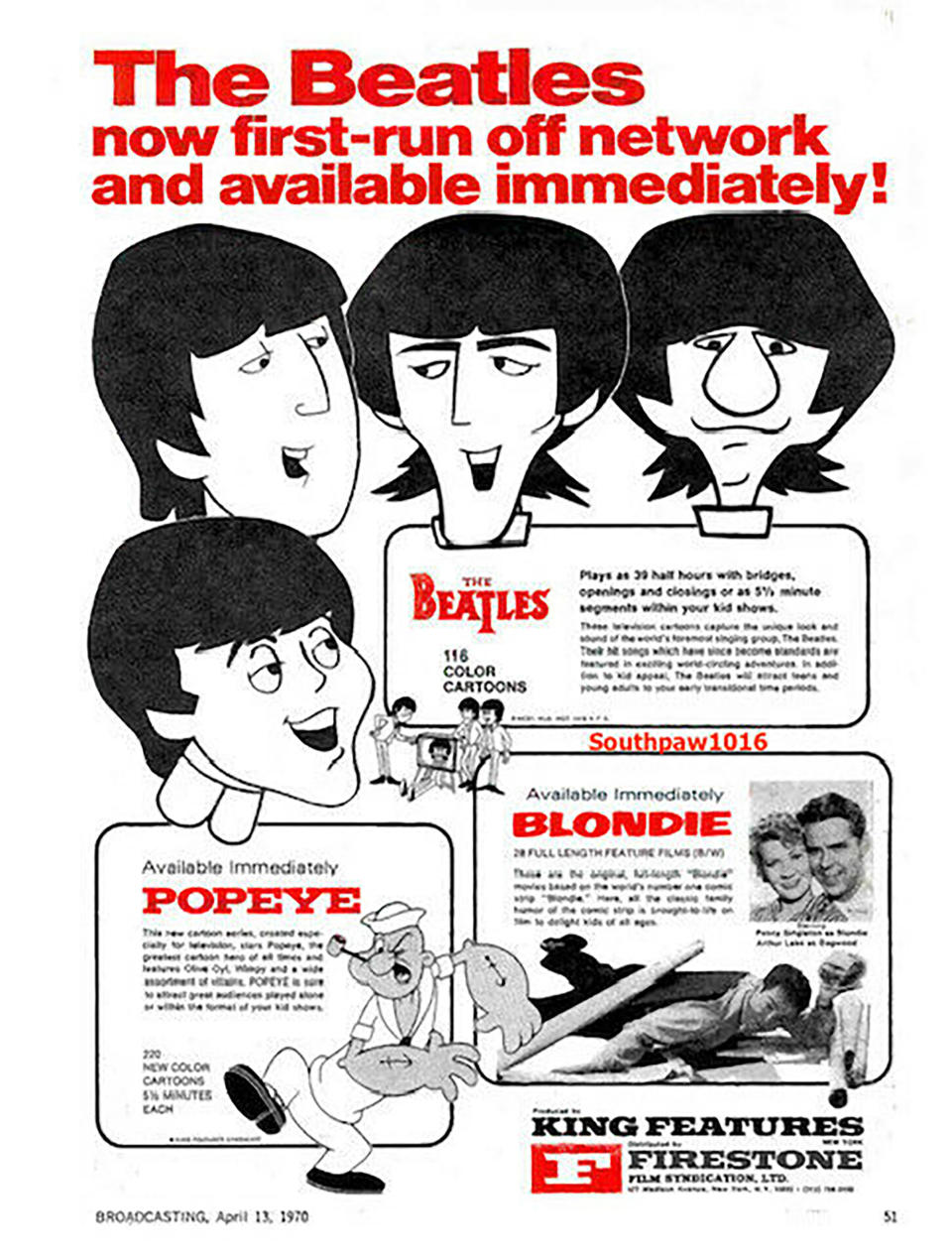
King Features Syndicate
Norman Kauffman, a production assistant at TVC, told the author that he remembered the model sheets designed by Sander. “Peter,” he said, “used what had been the typical ‘Beatles stereotypes’ at that time, where John was seen as the leader, Paul was the most poised and stylish, George was portrayed as loose-limbed and angular, while Ringo was seen as the nice, gentle, but always rather sad-looking, Beatle.”
Speaking Beatle
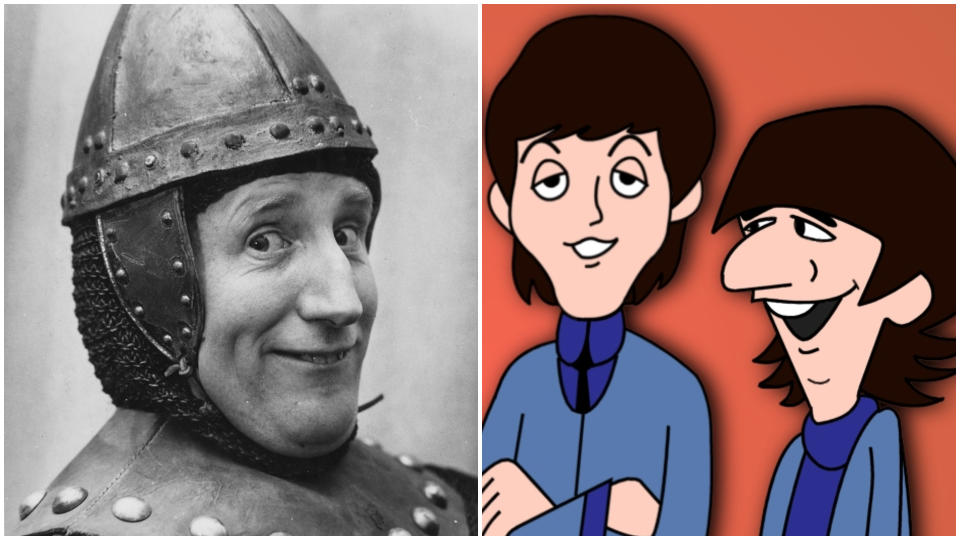
Getty Images; ©AppleCorpsLtd
The task of finding the actors to portray the voices of the group was the final piece of the series puzzle. “The choices made by Brodax and his team are quite possibly the main reason that most fans are unfamiliar with the series unless they were watched in their original broadcasts in the 1960s or the syndicated version in the 1970s,” Axelrod opines. “The team at King Features had planned for this series to be seen on American television. Brodax felt that if he hired voice actors from The Beatles' hometown of Liverpool, no American child would understand the accents. He wanted the voices to be what he called an ‘Americanized’ version of a Liverpool accent. Overall, there was some give and take on this issue and a compromise was struck.”
RELATED: Birth of The Beatles: The Day John Lennon Met Paul McCartney (EXCLUSIVE)
For the voices of Paul and Ringo, British actor Lance Percival was chosen. He was already in the entertainment business and had known The Beatles. He remembered portraying Paul as “bright and cheerful” and Ringo as “the low-voiced fall guy for the humor.”
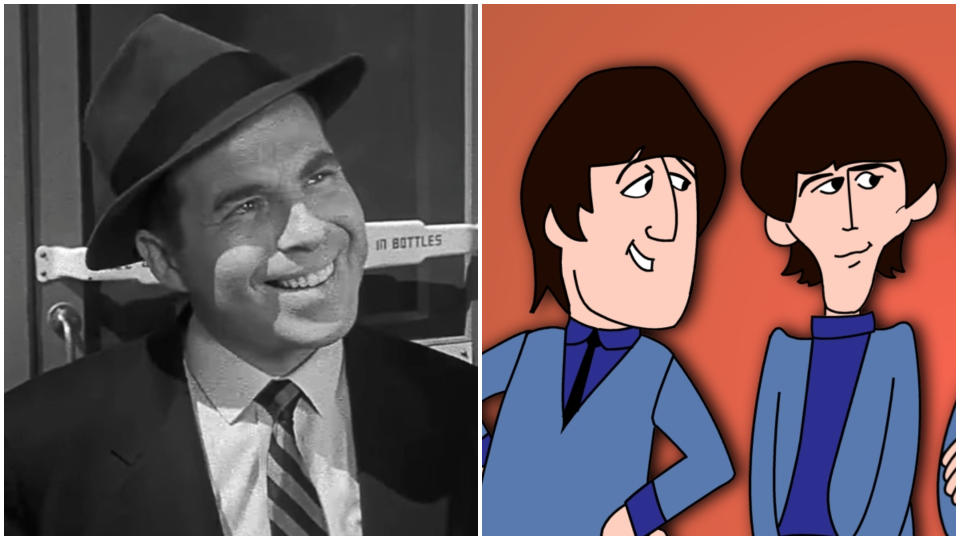
L-R: ©United Artists/Wikipedia; ©AppleCorps.Ltd
“The actor chosen to voice John and George was Paul Frees,” says Axelrod, “which was a major point of contention then, and continues to be so to this day. Frees is an icon of animation and voice-over work. His name might not sound familiar, but his voice on television and in film certainly is. He was the voice of Boris Badenov in the Rocky and Bullwinkle Show, and Inspector Fenwick from Dudley Do-Right. He portrayed voices in countless cartoons, including most of the Rankin-Bass Christmas special beloved to this day. So why would the voice of such an icon of entertainment be so controversial as two of The Beatles?”
Jack Stokes, director of the series at TVC, summed it up best: “The voices sounded nothing like The Beatles’ own Liverpool accents. Just some daft idea of how we English sounded to Americans.”
The Race is On!
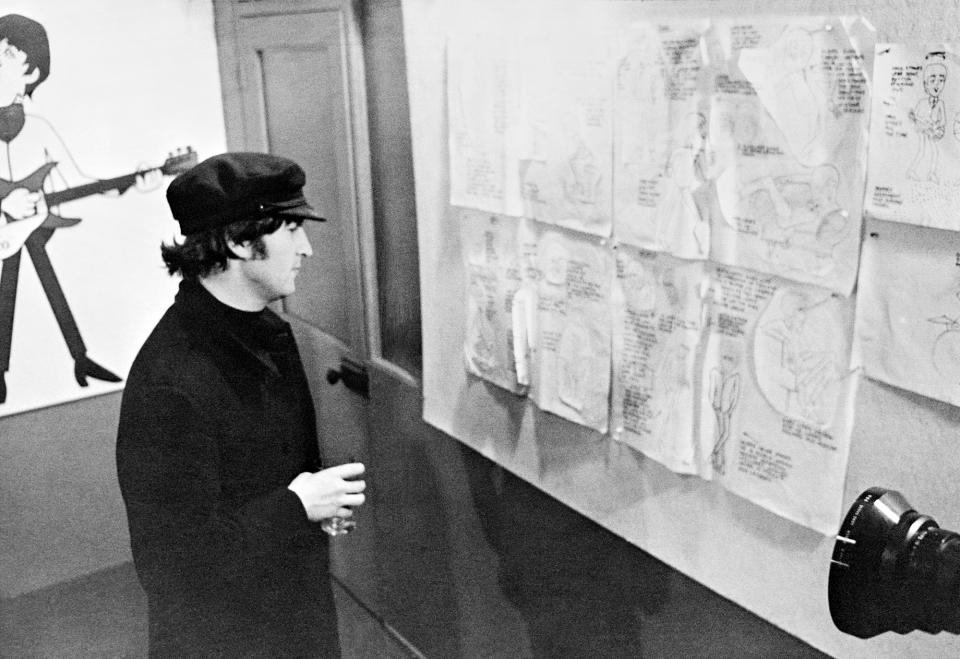
Mark and Colleen Hayward/Getty Images
Back in 1965 there were only a few months to go and although the puzzle pieces were all in place, no work had actually begun on the series, so what followed was a fast and furious pace, resulting in animation suffering in terms of detail. But production was in full swing, though there was one more thing that needed addressing.
King Features and TVC wanted The Beatles to see the progress on the show that would immortalize (or demoralize) them in cartoon form. The date was July 30, 1965, which was the day after the group attended the premiere of their second motion picture, Help! They were also rehearsing for their live performance on the UK series Blackpool Night Out on August 1, so they were exhausted.
The small offices of TVC were transformed into a screening and reception area and some of the production team, along with an ABC UK film crew, were on hand as The Beatles walked in to see their animated counterparts for the very first time. The lights were dimmed as the group was shown two completed episodes. When it was over, the reaction of the group was initially positive
“They liked it at first,” recalled Lance Percival. “It was an ego thing, but then they got picky. I didn’t hear what John was saying but Paul was sitting in front of me asking who was doing his voice. Ringo was okay with it all, and he commented that I made him the dum-dum, and I told him that it wasn’t me, it was how the scripts were written.”
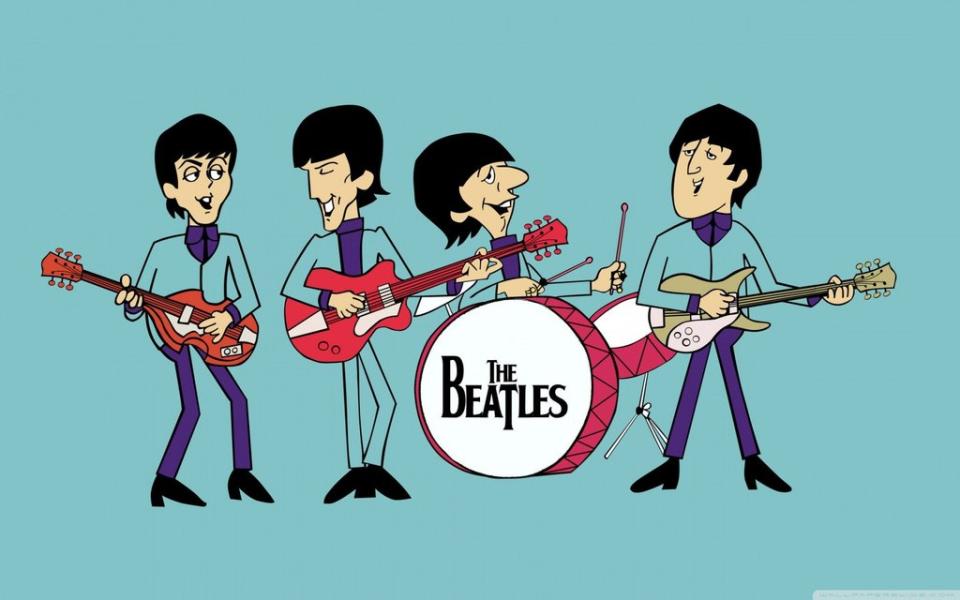
©AppleCorpsLtd/YouTube
The screening soon became one big party as the food and the booze began to flow. At one point someone noticed that John Lennon was missing. The TVC staff was ordered to “find John Lennon.” After a brief search, Norman Kauffman found him hiding under one of the buffet tables. He was tired and didn’t feel like being a Beatle for a few minutes, so he went and hid. Kauffman tried to coax John out, but he simply wasn’t ready to exit. Instead, John asked Kauffman to get him a bottle of wine, which he enjoyed under the table for a bit.
Beatle singalongs
It was Saturday, September 25, 1965, at 10:30 A.M. Eastern Standard Time. The show was finally about to premiere. The first cartoon to be seen was “A Hard Day’s Night,” which found the group trying to find a quiet place to rehearse, which was Transylvania where monstrous mayhem ensued. Two sing-alongs and another adventure later, the ratings waiting game was on.

Michael Ochs Archives/Getty Images
“By this time, The Beatles had conquered the planet but would their popularity, fame and gold records translate to ratings gold?” Axelrod asks rhetorically. “ABC would have to wait approximately two weeks for word about whether their ground-breaking cartoon show was worth the enormous gamble taken by all parties involved. It was. The Beatles cartoon opened with an almost unprecedented 51.9 share of the viewing audience. In America, the show became a Saturday morning success, airing two seasons of new episodes and three of reruns. Yet another aspect of Beatlemania in American, born, like so much else, out of February 9, 1964.”
Click through for more 1960s nostalgia, or keep reading…
Best TV Theme Songs: Music That Shaped the Soundtracks of Our Lives

